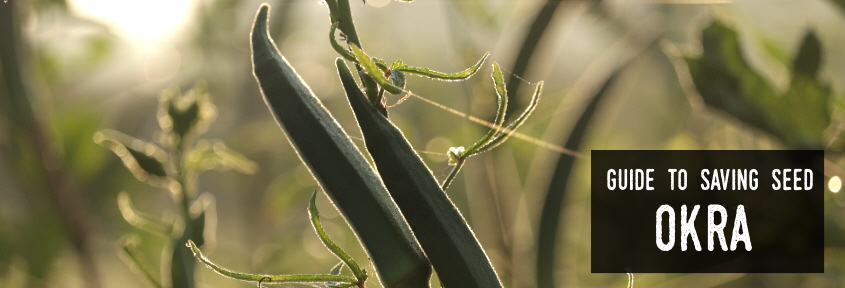
Guide to Saving Okra Seed
FAMILY: Malvaceae
POLLINATION: Self-Pollinating and Insect Pollinated
SEED LIFE: 1 to 3 years
LIFE CYCLE: Annual or Perennial (in warmer areas)
ISOLATION DISTANCE: 30 to 488 metres
PLANT SPACING: Same as when grown for eating
If you're new to growing okra then you're in for a treat!
This beautiful 'old world' vegetable was first domesticated in the African region later making an appearance in Egypt around the 14th Century.
A beautiful bush, super easy to grow with an abundance of flowers resembling its close relative the hibiscus. Whilst primarily grown for its edible pods, its beauty allows it to be easily placed within the flower garden.
When it comes to seed saving, it is great for the beginner due to its ability to self-pollinate and ease of processing the seed.
WHEN TO HARVEST
Mature pods are ready to harvest as soon as they turn brown on the bush and become dry. This happens quite quickly within a matter of days. The pods may be hand-picked over a number of days as they brown and then left to dry further in a cool, well-ventilated area until all pods are dry and brittle.
Then all you need to do is wait for a nice, sunny, dry day when there's little or no moisture in the air and no rain on the horizon........
STEP 1: REMOVING SEEDS FROM THE POD
For small quantities, the pods may simply be removed from their shell by hand. This is a great option as it leaves very little debris making them easier to clean, and can also be very enjoyable & therapeutic! :) However, the drawback is that it is very time consuming.
For larger quantities, the extraction of the seed from the pod becomes much quicker by mass processing on a tarp, in a hession bag or similar and stamping all over them with boots on. Best results are achieved if this step is done on a dry day with little moisture in the air. When pods are dry and brittle they separate really easily from their shell.
.jpg)
.jpg)
.jpg)
STEP 2: CLEANING THE SEED
What you are now left with is some pretty large seed with only a little finer fibrous material. The seed is easily cleaned by placing into a regular household sieve and shaking. Smaller particles fall through leaving behind clean, pure seed.
.jpg)
.jpg)
.jpg)
Too easy!
